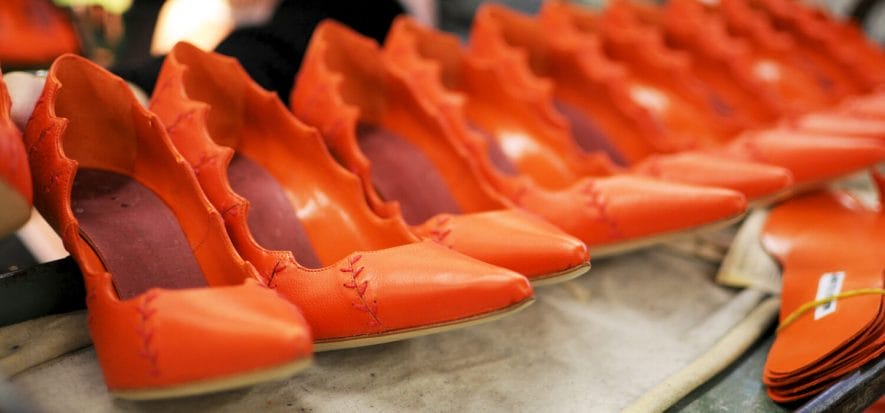Record breaking figures for exports, but manufacturing declines. While waiting for Micam, the international footwear fair which is due to kick off on Sunday, in Milan, Assocalzaturifici made public Italy’s footwear 2018 financial statement. The industry’s exports figures are record breaking indeed, as they reached about 9.6 billion euros (that is, +0.7%), despite a downturn in the volume of sales, which decreased by 2.3%. Consequently, in view of the standstill of domestic market, production dropped as well (-4% in the second six-month-period of 2018): overall, throughout the year, it decreased by 2.6%, as reported in the survey carried out by Centro Studi Confindustria Moda for Assocalzaturifici. Such figures, remarked the association, confirm, once again, “that international luxury top brands undoubtedly play, at this point, a decisive role as to accomplishments achieved in the industry sectors”. In other words, they highlight the importance of subcontracting production, mostly destined for Switzerland (which is a logistics and supply platform for fashion houses), alongside a remarkable hike recorded by average prices in France. Furthermore, Russia’s market has been slowing down again, as current sales dropped by 50% compared to 2013. Italy’s market is still, except for sneakers. Because of the downturn in production, companies and employees have been declining in number as well. According to 2018 financial statement, businesses actively running amounted to 4,505, therefore decreasing by 4.3%, compared to 2017: 203 shoe factories less, including industry and craftsmanship. As for workers directly engaged in the industry, there were 75,680 of them, 920 less (that is, -1.2%). The Marche placed at the bottom of the league, as they closed 138 companies and dismissed 1,116 employees (including shoe factories and manufacturers of spare components). The beginning of 2019 has been marked by a prudent attitude, as deliveries dropped by 1.3%, in terms of volumes, compared to 2018 last quarter. More than likely, the manufacturing negative trend will go on that way.
Italy’s footwear 2018 financial statement: exports nearly account for 10 billion euros, but manufacturing declines in volumes. Caution about 2019











